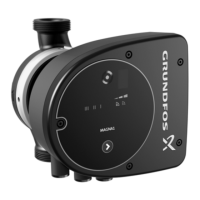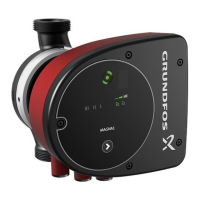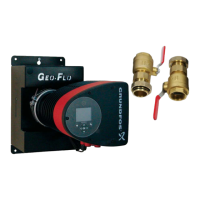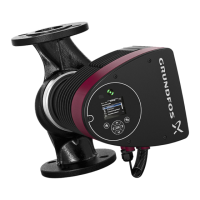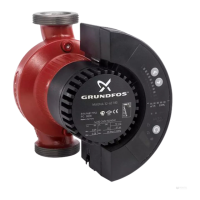English (GB)
22
7.5 Selecting control function
System application Select this control mode
Systems with relatively large pressure losses in the distribution pipes and in air-conditioning and cooling
systems.
• Two-pipe heating systems with thermostatic valves and the following:
– very long distribution pipes
– strongly throttled pipe-balancing valves
– differential-pressure regulators
– large pressure losses in those parts of the system through which the total quantity of water flows, for
example a boiler, a heat exchanger and a distribution pipe up to the first branching.
• Primary circuit pumps in systems with large pressure losses in the primary circuit.
• Air-conditioning systems with the following:
– heat exchangers, fan coils
– cooling ceilings
– cooling surfaces.
Proportional pressure
Systems with relatively small pressure losses in the distribution pipes.
• Two-pipe heating systems with thermostatic valves and the following:
– dimensioning for natural circulation
– small pressure losses in those parts of the system through which the total quantity of water flows,
for example a boiler, a heat exchanger and a distribution pipe up to the first branching or modified to
a high differential temperature between the flow pipe and the return pipe, for example district
heating.
• Underfloor heating systems with thermostatic valves.
• One-pipe heating systems with thermostatic valves or pipe-balancing valves.
• Primary circuit pumps in systems with small pressure losses in the primary circuit.
Constant pressure
Operation according to the maximum or minimum curve, like an uncontrolled pump:
• Use the maximum-curve mode in periods in which a maximum flow rate is required. This operating
mode is for instance suitable for hot-water priority in domestic hot-water systems.
• Use the minimum-curve mode in periods in which a minimum flow rate is required.
Constant curve
